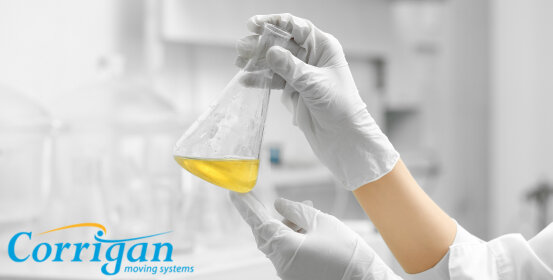
Relocating a lab, whether it’s standalone or within a facility, is a substantial undertaking. It necessitates detailed planning and considerable effort, considering the number of challenges involved – from safely transporting fragile equipment to managing hazardous materials. In this article, we’ll explore five key things to consider when preparing for your lab relocation.
The first step in any successful lab relocation is creating a comprehensive and precise inventory. This involves cataloging each piece of equipment, every chemical, and any samples. This not only facilitates the organizing the move but also ensures that items are not lost or harmed during transit. It’s important to record any items requiring special handling or specific transportation conditions, such as temperature control.
Safety should be paramount when coordinating a lab relocation. This means ensuring all hazardous materials are packed and transported based on safety standards. Additionally, it’s crucial to have an emergency plan for unexpected incidents. This plan should detail emergency protocols, include enough insurance coverage, and make sure all staff involved are trained for emergencies.
Laboratory equipment can be both delicate and valuable. Therefore, it’s crucial that all equipment is handled with care during the move. This includes securely packing the equipment, using appropriate transportation, and designing the route to avoid unnecessary bumps or vibrations. Bear in mind that some equipment may require recalibration after the move, so it’s smart to plan time for this after the move.
Depending on your lab’s focus, there may be particular regulations you need to comply with during the move. These could range from how certain chemicals are moved to the proper disposal of waste materials. It’s recommended to be aware of these regulations or hire a professional lab relocation service that can guide you through the process.
An important goal for a lab relocation is to limit downtime. This involves careful preparation to ensure that essential lab functions can continue with limited downtime. One strategy is moving the lab in phases, starting with non-essential equipment and materials. Another option is to schedule the move during a period of low activity, such as a Saturday or Sunday.
The challenges and high stakes of lab relocation make it a task best left to professionals. Hiring a lab relocation service can significantly simplify the process and ensure a seamless transition. These professionals have the needed knowledge and experience to handle precision equipment and hazardous materials safely and efficiently.
After thinking about all the difficulties involved in lab relocation, it’s evident that expert help can make or break the process. At Corrigan Moving Systems, we bring over 90 years of experience to your lab relocation project. Our team is expert in handling delicate equipment, hazardous materials, and ensuring compliance with regulations.
Our solutions are personalized to meet your unique needs, ensuring minimal impact and maximum efficiency during your move. We take pride in our client-6centric approach, offering tailored options and maintaining open lines of communication throughout the process.
Don’t leave your lab relocation to chance. Trust the specialists at Corrigan Moving Systems to deliver a safe, prompt, and efficient move. Get in touch with us to discuss your lab relocation requirements. We’re here to help you make a smooth transition to your new location.